Transportation Museum
Introduction
Author-Uploaded Audio
00:00 / 00:00
Audio Tour of the Transportation Museum by Audy Perry
Text-to-speech Audio
Images
For centuries people relied on animal-drawn wagons to travel long distances. The two white carriages are from the early 1900s and were used by the upper class.
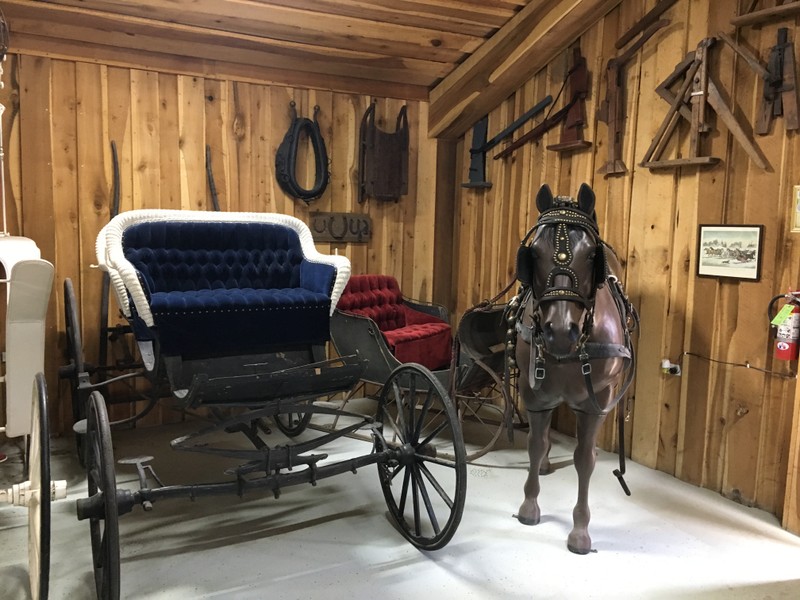
This 1908 electric truck was part of a fleet of trucks used by the Curtis Publishing Co. and represents the early potential of electric cars 100 years ago.
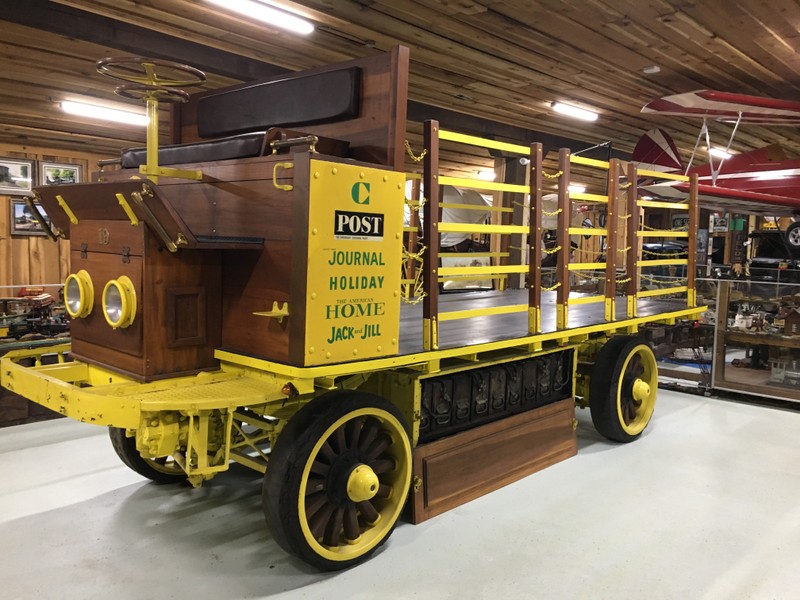
The Sears Motor Buggy was sold from 1908-1912 in the Sears catalog and was a commercial failure. Its design was too simple and lacked innovation.
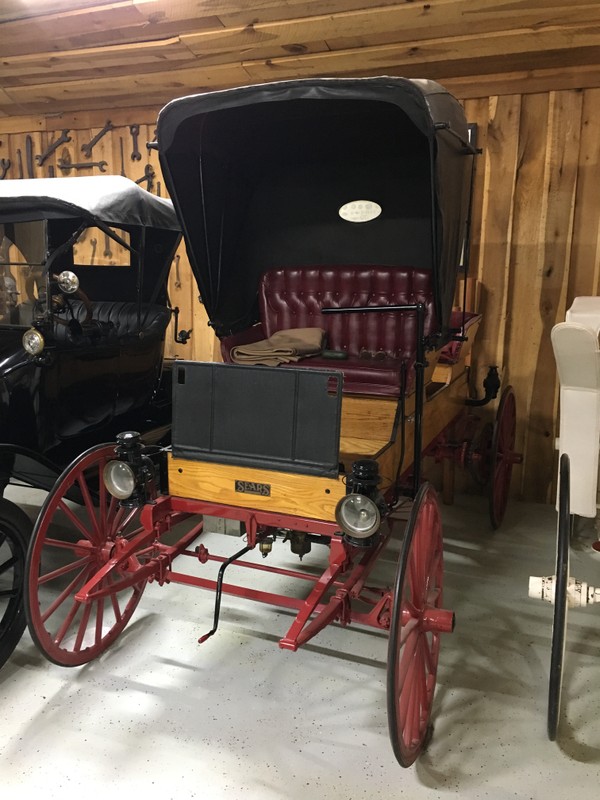
This Ford Model T is a 1915 Runabout version, also known as a Roadster. It had a four cylinder engine, retractable roof, and cost $440. It was the last Ford model to have a brass radiator.
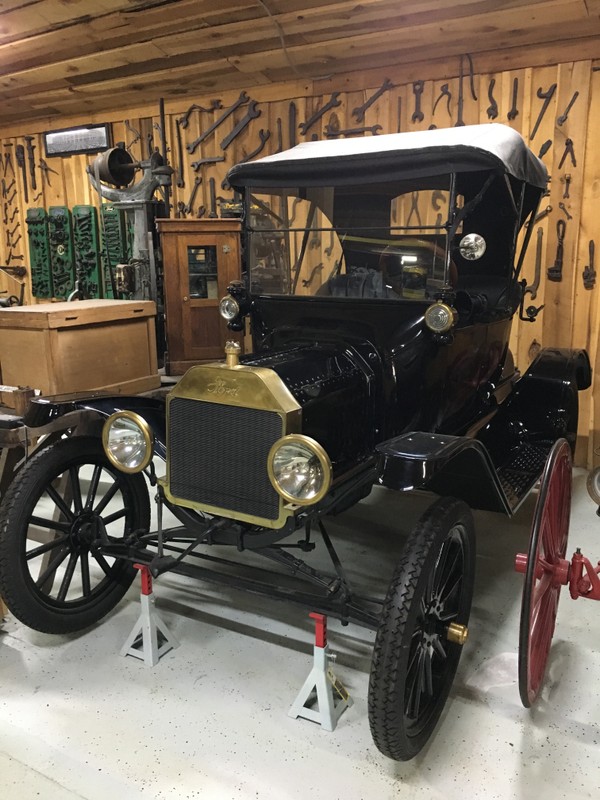
This plane was built by a man from Lavalette, West Virginia as a personal hobby. It is powered by a Volkswagen car engine, and logged around 300 flight hours.
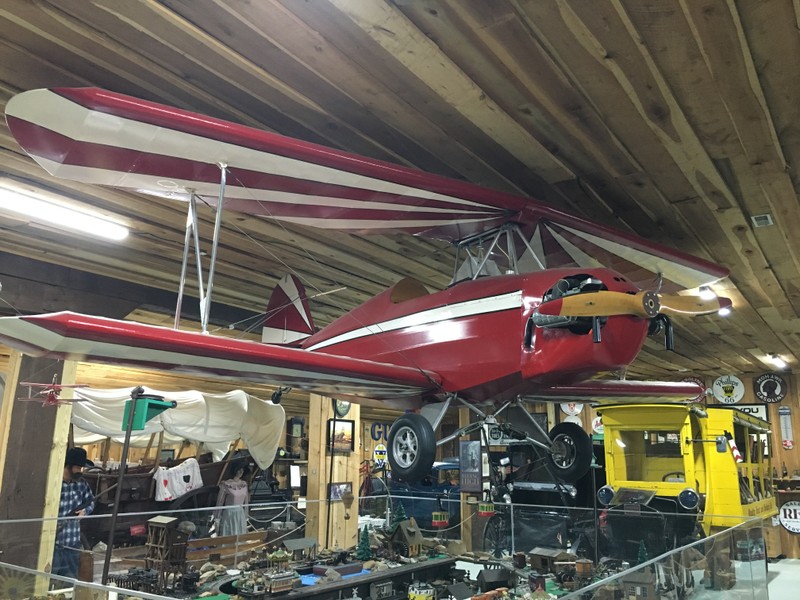
The depot hack was essentially an early taxi or station wagon. Its main purpose was to transport luggage around train stations or to hotels. This example was built in 1923.
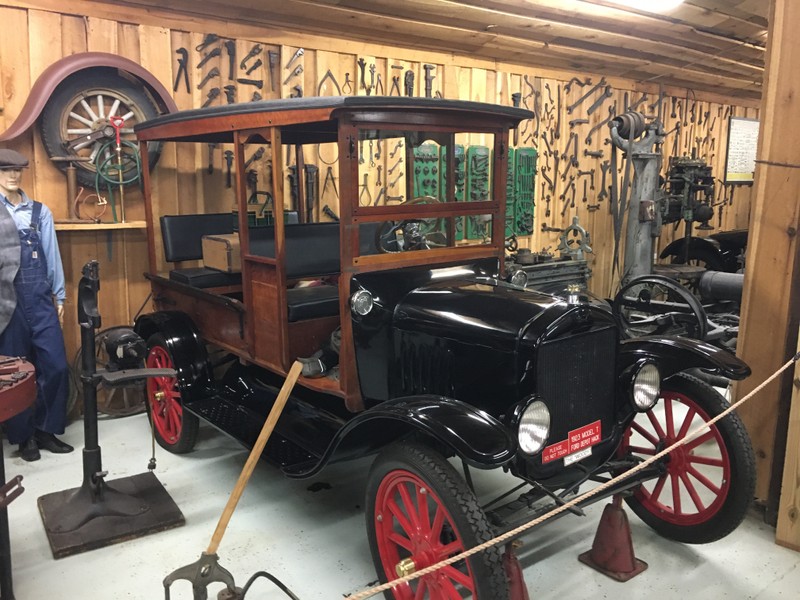
This commercial truck was built in 1915 by the Denby Motor Truck Co. of Detroit. In the 1970s it was purchased and restored by Huntington grocer Jack Thompson, who sold produce from it once a year for charity.
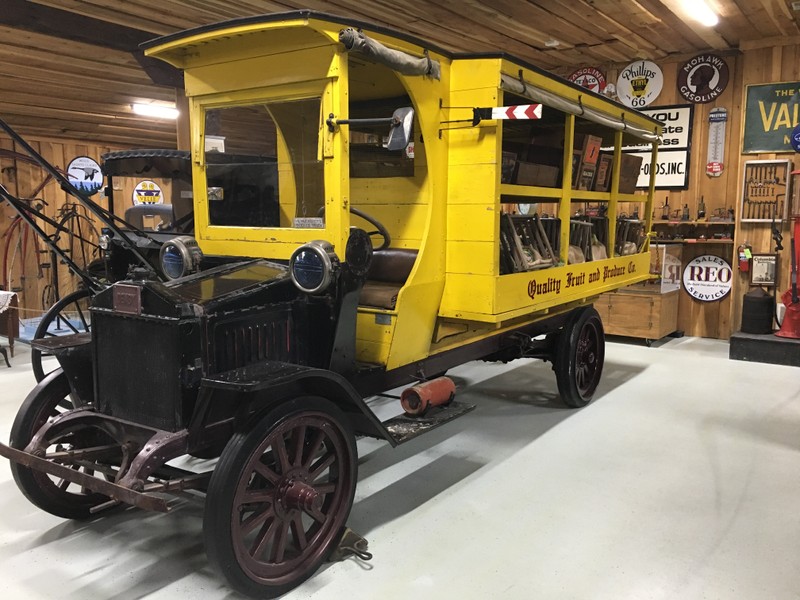
This Model TT is from 1921. It weighs around one ton and had a top speed of only 24 miles per hour. Customers purchased the truck without a bed, and had to build one themselves.
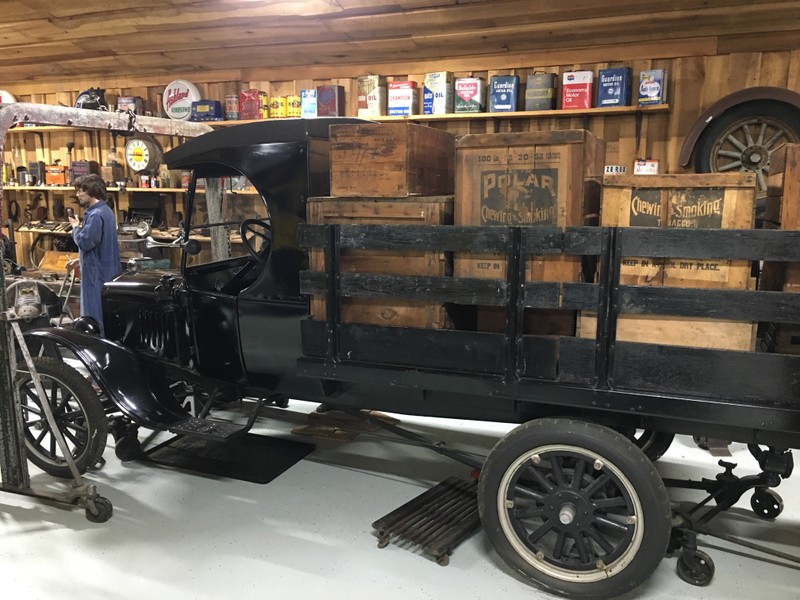
Display of items from a typical mechanic shop.
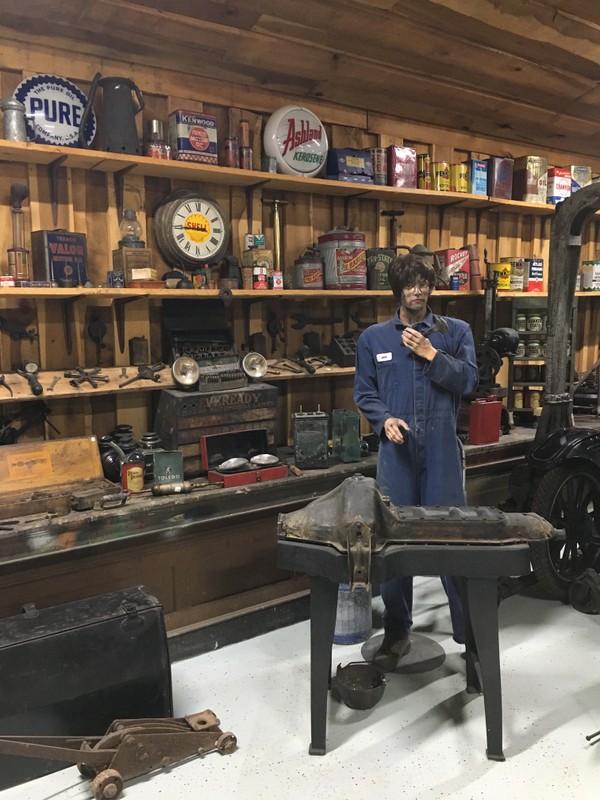
Ford Model T Roadster
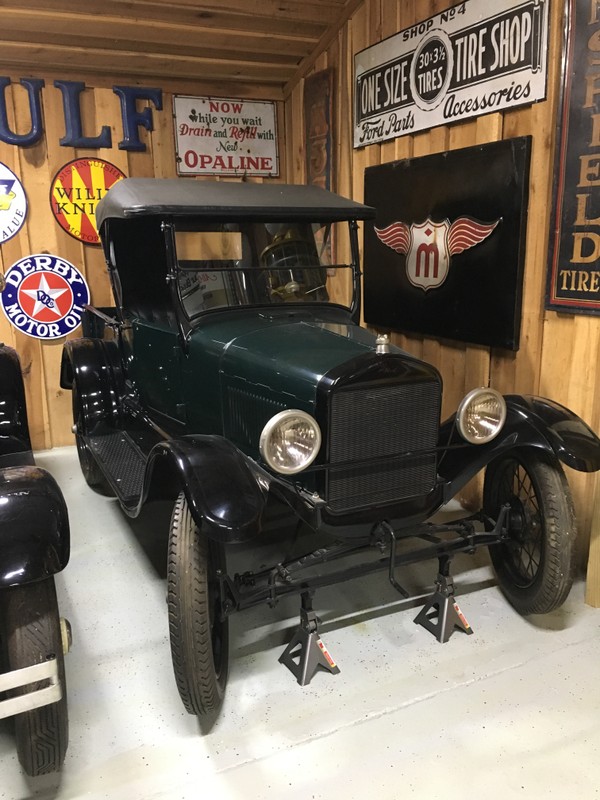
Ford Model A
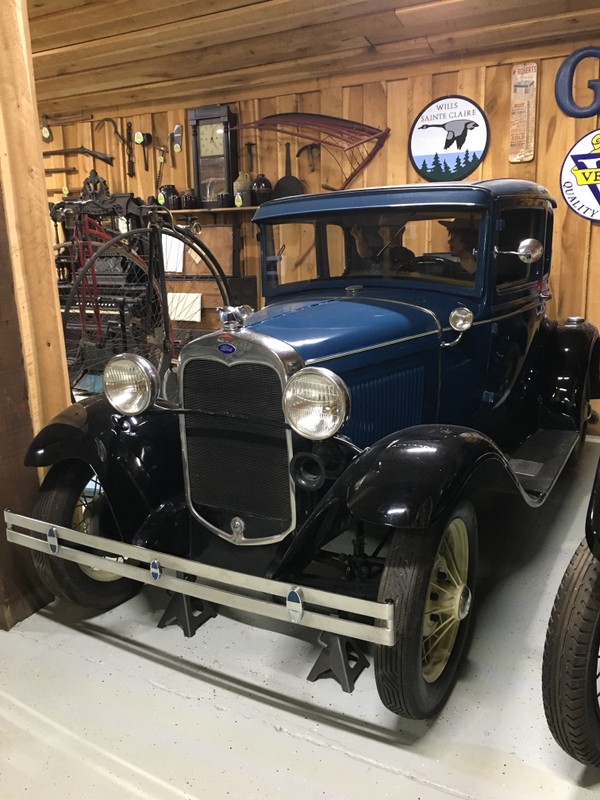
Conestoga wagons are recognizable by their distinct curved shape. They were primarily used in the 1700s and early 1800s for transporting cargo.
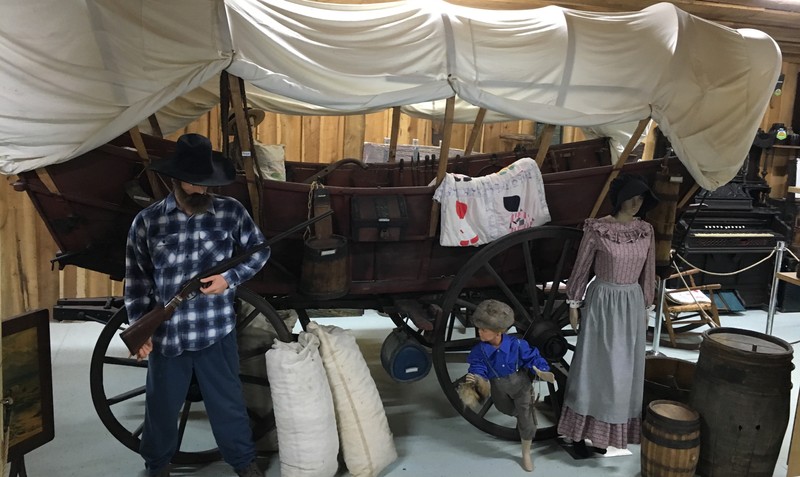
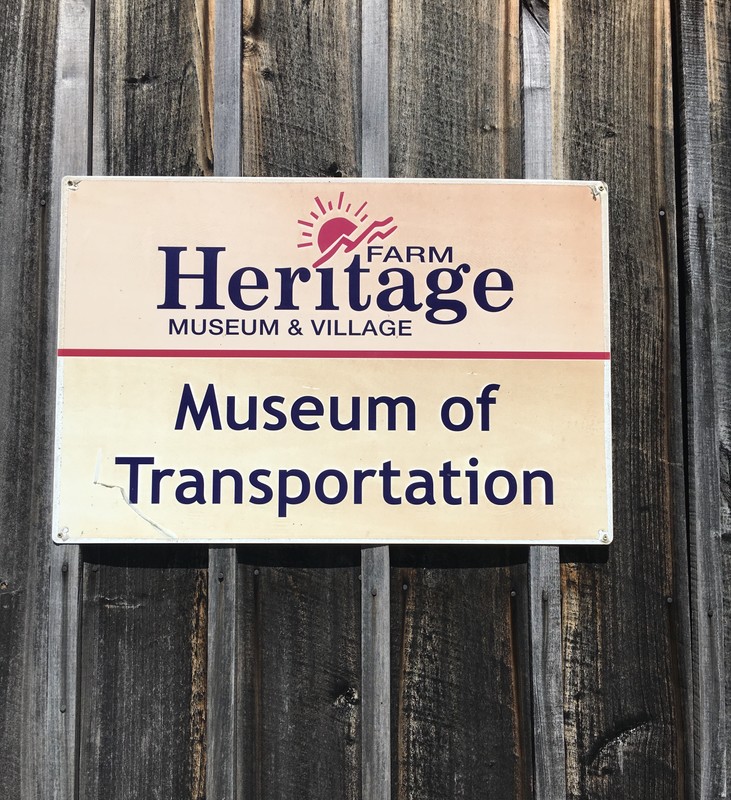
Backstory and Context
Text-to-speech Audio
For most of human history, people traveled from one place to another on foot or with animals. Getting anywhere took long periods of time; communication and trade were much slower. Boats could travel faster, but they were limited to wherever bodies of water were located. Everything changed in the 1800s with the rise of the steam engine. New inventions such as steamships and steam-powered trains greatly reduced the amount of time it took to travel and brought people closer together. By the late 1800s, numerous inventors and engineers were experimenting with creating a fast, self-propelled machine that did not need tracks or water to move on.
Steam tractors and similar devices were being developed by the mid-1800s, but the first true car (which used an internal combustion engine) was invented in 1886 by a German man named Karl Benz. The first American car was developed in 1893 by Charles and Frank Duryea. For the first twenty years of automobiles, they were very slow, heavy, and expensive. Many regarded them as little more than a toy for the wealthy. Dozens if not hundreds of small companies formed across America and Europe, and tried to sell competing models of cars. Many of these companies only sold a small number before closing. During this period there were numerous cars of different shapes and sizes. Some were gasoline-powered, some were battery-powered, and some were even steam-powered.
Commercial Electric Truck
Electric vehicles may seem like a new innovation, but in actuality they have been around for as long as vehicles themselves. Companies and inventors were experimenting with making battery-powered cars by the 1890s. Studebaker even had its own line of electric cars from 1902 to 1912. Electric cars were fairly popular because they were easier to use, quieter, and did not emit any pollutants. For a number of years they were a serious competitor against gasoline-powered cars. Ultimately interest in battery powered cars declined when gasoline became cheaper and better roads were constructed. Electric cars’ short battery life and the introduction of the gasoline-powered Ford Model T were problematic as well. By the 1930s electric vehicles had faded out of the market.
The electric truck seen here was built by the Commercial Truck Company of Philadelphia in 1908. It was part of a fleet of 22 trucks used by the Curtis Publishing Company, a Philadelphia business that printed and distributed magazines such as the Saturday Evening Post, the Ladies’ Home Journal, Jack and Jill, and The American Home. These trucks were massive, weighing five tons and able to carry ten tons of materials. These trucks were used to deliver giant rolls of paper to the printing presses; then they would pick up the printed newspapers and magazines to deliver them to post offices and newsstands.
The truck was powered by a large set of batteries which took six hours to charge. The cab noticeably had two wheels; the top one was the steering wheel, while the bottom was the gear shift. The Curtis Publishing Company maintained and used these trucks up until 1962. Several eventually made their way to West Virginia. Heritage Farm purchased two models in the 1990s, and used parts from one to restore the other.
Sears Motor Buggy
This vehicle is a testament to the wide variety of items that Sears offered in its mail order catalogs. Unlike other products however, Sears’ attempt at selling a car did not fare so well. The Sears Motor Buggy was introduced in 1908 and was marketed until 1912; during that time only 3,500 were sold. The buggy’s main appeal was its simplicity: it was essentially a wooden carriage with an engine and bicycle chains attached to it. The large wheels allowed it to ride smoothly over unpaved roads. It cost a comparatively cheap $395 and could go up to twenty miles an hour. The Sears car was ultimately unable to compete against the numerous other car manufacturers in the market at the time; it also happened to be introduced the same year as the famous Ford Model T. The vehicle here is from 1910.
Ford Model T
While electric trucks, Sears Motor Buggies, and countless other kinds of vehicles were being tried and tested on the market, a Michigan man named Henry Ford was unveiling his latest car, the Ford Model T. Ford had produced several models of cars before, but the Model T was by far the most successful. The car was first marketed in 1908 for $850, but the price dropped over the years. The car was durable, decent quality, could go up to 45 miles per hour, and was extremely popular.
The key to Ford’s success was his use of the assembly line process. In an assembly line, different workers were tasked with doing individual tasks, such as attaching the tires on each car, painting the body of each car, etc. This sped up the rate at which cars could be produced, allowing Ford to sell them at lower costs over time. Thanks to its low price and wide availability, the Ford Model T became the first car accessible to the majority of Americans. No longer would cars be restricted to businesses and the wealthy. Between 1908 and 1927, over 15 million Ford Model Ts were sold.
The model seen here is from 1915 and is referred to as a Ford Runabout or a Ford Roadster. It sold for about $440, much lower than the initial price in 1908. Cars like these were still considered very expensive, but now it was possible for middle class families to obtain one.
Airplane
The small airplane seen here is a fully functional model constructed by a local hobbyist. It is powered with a Volkswagen car engine, and logged around 300 flight hours before the owner donated it to the museum. The design of this plane is modeled off of the biplanes that were common throughout the 1910s and 1920s. Airplanes date to 1903 when the Wright Brothers tested their first successful plane, but they did not become common until the 1920s when the first commercial airlines developed to deliver mail.
Ford Depot Hack
The Ford Depot Hack, sometimes known as the “Woody,” was used specifically for carrying passengers and their luggage from train stations to hotels, or vice versa. In a way, they were like the first taxi cabs. Depot hacks were designed with a spacious back, to allow room for suitcases or extra seating. Interestingly, Ford did not manufacture these cars. Instead, other companies purchased the chassis (or framework) of Ford Model Ts and built the bodies themselves. The depot hack seen here is from 1923.
Fruit and Produce Truck
This vehicle was manufactured by the Denby Motor Truck Company in Detroit, Michigan. The company was in existence from around 1912-1929 and sold commercial trucks. It also contributed to the development of military transport trucks for the U.S. Army in World War I. The Denby has a fuel tank positioned behind the steering wheel so that the gas could be gravity-fed into the engine. It uses no electrical components whatsoever; no gauges, water pump, electric starter, etc. The headlights are even fueled by acetylene gas instead of electricity.
The Denby at Heritage Farm is a 1915 model; Huntington resident Jack A. Thompson purchased it from a farmer named Leo Donhauser in New York in 1973. Thompson restored the truck, and once a year he would drive it around town selling produce for charity in honor of his father, who once drove a similar produce truck. For many years Thompson owned a popular grocery business in Huntington called the Quality Fruit and Produce Company.
Ford Model TT
The Model TT was Ford’s first version of the pickup truck. Introduced in 1917, it was essentially a larger and heavier version of the Model T. It weighed around one ton, and because of this could only travel at fifteen miles per hour. Originally Ford only sold the chassis (or framework) of the truck, and buyers had to construct the bed and cab themselves. This allowed for a little bit of customization so that people could adapt the truck to their individual needs. In later years Ford also sold the trucks with a body. The truck was quite popular with farmers who had to transport crops and supplies.
Ford Model A
The Model A was Ford’s successor to the Model T. The company produced this car from 1927-1931 and it came in a variety of shapes and colors. Ford sold roughly five million Model As, and the vehicle became an icon in 1920s and 1930s media.
Conestoga Wagon
The iconic Conestoga wagon is named after the Conestoga River area in Lancaster County, Pennsylvania where they were originally created. The wagons were first produced around the mid-1700s and usage peaked between 1820 and 1840. They were large and durable, able to transport large amounts of goods; up to six tons. It took a team of four or six horses to pull one, and could travel 12-14 miles a day. The wagons had a distinct curved shape to prevent cargo from shifting during movement, and to aid when crossing small bodies of water. Conestoga wagons were used primarily in Pennsylvania, Maryland, Ohio, and Virginia (including present-day West Virginia) to transport cargo for trade; they were essentially the original semi trucks. Contrary to popular belief, Conestoga-style wagons were not used by pioneers to travel far out West because they were too heavy to travel extremely long distances. Pioneers instead used flat-bed wagons known as schooners.
Wells Fargo Stagecoach
Stagecoaches were the dominant method of overland transportation prior to railroads. These wagons were designed to take people, mail, and money over long distances. They notably included a leather suspension system to absorb some of the shock created by rattling and bouncing; this made the ride more comfortable for passengers compared to other wagons. Some of the better ones could travel up to fifty miles in one day. There were a number of stagecoach companies and stagecoach routes around the country, with the earliest ones dating back to the 1700s, but the most well-known was Wells Fargo. The banking company was founded in 1852 and speedy, long-distance deliveries were originally a major part of its operations. It first ran stagecoaches all over California during the California Gold Rush. Stagecoaches began to decline in popularity by the 1870s due to the rise of railroads, but some lines (including Wells Fargo) remained in operation as late as the 1910s.
Logging Camps
This model railroad depicts typical logging community in West Virginia. Next to coal mining, logging was the state’s second largest industry from the 1880s to the 1930s. West Virginia was rich in undeveloped land and millions of large trees. This resource became accessible with the development of railroads and the creation of giant, steam powered sawmills to cut the logs into lumber. Many small railroads were constructed around the state to transport logs down the mountains; from there they would either be put onto other trains or floated down rivers and sent all over the country to be made into tools, barrels, furniture, or building materials.
Small communities (such as the town of Cass) would often form alongside logging operations to support the loggers. Usually these were more short-lived than coal mining towns, as trees could be harvested much quicker. The logging industry in West Virginia collapsed by the 1930s due to overharvesting; entire swaths of the state became deforested and much of the original virgin timber was lost. Today most of the trees and forests in West Virginia are new growth, with very few more than a century or two old.
Riverboats
Rivers were the first “interstates” in America. Boats floating down rivers could travel faster and carry more goods than wagons. Use of the river for trade and travel increased during the 1800s with the invention of the steamboat. Steamboats could move up to five miles an hour, much faster than normal boats. Many towns and cities developed along rivers so that people could easily send crops and other goods on ships to be sold elsewhere, or to buy products from visiting ships. They were extremely important for economic development and trade between communities and states. Steamboats were dangerous machines however; the boilers sometimes exploded, destroying the entire ship. Usage of steamboats declined starting in the early 1900s due to the growth of railroads, automobiles, and airplanes. These new forms of transportation were all faster and, unlike boats, their range was not restricted to bodies of water. Today riverboats in the Ohio River Valley region are mainly used for transporting coal barges.
Cite This Entry
Straley, Steven Cody. "Transportation Museum." Clio: Your Guide to History. July 1, 2020. Accessed August 20, 2025. https://theclio.com/entry/25771/tour/9
Sources
“1923 Ford T Depot Hack.” Owls Head Transportation Museum. Accessed September 24, 2019. http://www.owlshead.org/collections/detail/1923-ford-t-depot-hack.
Archer, Seth. “An original Wells Fargo stagecoach would have cost as much as a new car today.” Business Insider. June 17, 2016. Accessed September 21, 2019. https://www.businessinsider.com/history-of-wells-fargo-stagecoaches-2016-6.
CarDataVideo. “Ford Model T - 100 Years Later” (video). Posted August 13, 2008. Accessed September 24, 2019. https://m.youtube.com/watch?v=S4KrIMZpwCY.
Clarkson, Roy B. “Timbering and Logging.” e-WV: The West Virginia Encyclopedia. November 5, 2010. Accessed September 21, 2019. https://www.wvencyclopedia.org/articles/728.
“Conestoga Wagon.” History.com. August 21, 2018. Accessed September 16, 2019. https://www.history.com/topics/westward-expansion/conestoga-wagon.
Evarts, Evan C. “1912 electric truck: Take that, Tesla Semi!” Green Car Reports. May 6, 2018. Accessed September 16, 2019. https://www.greencarreports.com/news/1116596_1912-electric-truck-take-that-tesla-semi.
Harris, Amy. “The History of the Airline Industry.” USA Today. Accessed September 21, 2019. https://www.traveltips.usatoday.com/history-airline-industry-100074.html.
“A History of Steamboats.” U.S. Army Corps of Engineers. Accessed September 24, 2019. https://www.sam.usace.army.mil/Portals/46/docs/recreation/OP-CO/montgomery/pdfs/10thand11th/ahistoryofsteamboats.pdf.
Krumboltz, David. “Me and My Car: Denby truck in the family since 1919.” East Bay Times. June 15, 2010. Accessed September 16, 2019. https://www.eastbaytimes.com/2010/06/15/me-and-my-car-denby-truck-in-the-family-since-1919/.
Kurin, Richard. “The Conestoga Wagon: The Road Westward.” The Great Courses Daily. September 6, 2017. Accessed September 16, 2019. https://www.thegreatcoursesdaily.com/the-conestoga-wagon-pushing-westward/.
Matulka, Rebecca. “The History of the Electric Car.” U.S. Department of Energy. September 15, 2014. Accessed September 16, 2019. https://www.energy.gov/articles/history-electric-car.
“Model T.” History.com. May 2, 2019. Accessed September 16, 2019. https://www.history.com/topics/inventions/model-t.
Valdes-Dapena, Peter. “See the car that Sears used to sell.” CNN Business. June 20, 2017. Accessed September 16, 2019. https://money.cnn.com/2017/06/13/autos/sears-motor-buggy/index.html.
“The Wells Fargo Stagecoach.” Wells Fargo. Accessed September 21, 2019. https://www.wellsfargo.com/about/corporate/stagecoach/.
ZumMallen, Ryan. “How the Model TT Pickup Sparked 100 Years of Ford Trucks History.” Trucks.com. July 27, 2017. Accessed September 21, 2019. https://www.trucks.com/2017/07/27/ford-model-tt-100-years-pickup-trucks/
Images courtesy of the author.

